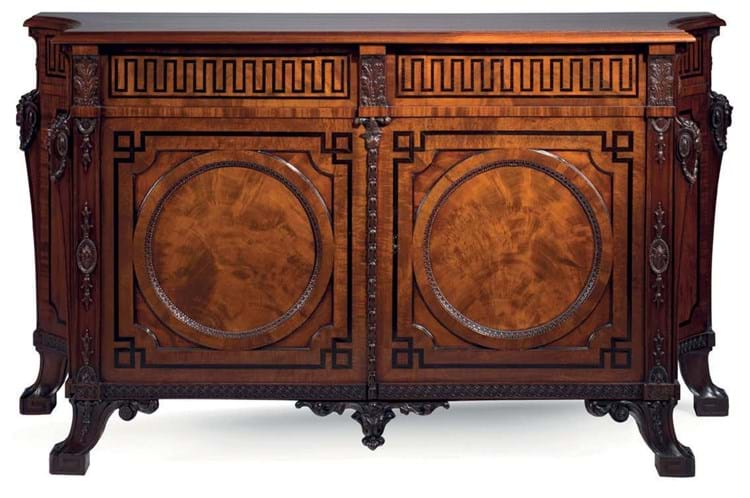The neoclassical commode, made for the London residence of Sir Rowland Winn (1739-85) c.1766, was exported from the US to London, to be offered for sale at Christie’s with an estimate of £3m-5m.
It is understood that inlaid ivory letters were recently removed in the US and replaced with ivorine, the faux ivory celluloid invented in 1899. The commode was then included in the Thomas Chippendale: 300 Years sale on July 5.
Asked by ATG to comment, a Christie’s spokesperson confirmed that “the sellers of this commode decided to have the ivory replaced with ivorine ahead of the sale to enable ease of movement. The catalogue noted that the alphabet is now ivorine.”

The addition of the ivory letters to the interior of the Rowland Winn commode, made soon after the initial commission in 1766, is detailed in a Chippendale invoice to Rowland Winn dated February 14, 1769, which mentions “To a neat Nest of Mahogany drawers and pidgeon [sic] wood holes with an ivory Alphabet made to fit into a Cupboard.”
Record-breaking piece
The Rowland Winn commode, at one time the most expensive piece of English furniture ever to appear at auction, is primarily made in mahogany and Indian ebony.
However, an unusual element – added by the Chippendale workshop as a special request in 1769 – was an array of 20 interior pigeon holes inlaid with ivory letters from A-Z.
When the commode was last sold by Christie’s in December 1991 as part of the Messer collection, for £935,000, the letters were catalogued as ivory.
While under a 2014 US law, it may have been legal to export the commode from the US with its ivory elements, it would not have been possible to bring it back to the US in the event the commode failed to sell or attracted interest from US bidders. The commode did not find a buyer in July.
“The catalogue noted that the alphabet is now ‘ivorine’
Neoclassicism
The piece has been hailed as a masterpiece marking Chippendale’s full arrival at neoclassicism in the mid-1760s. Before the sale, and its first appearance in public for 27 years as part of the anniversary auction, Christie’s international deputy chairman Charles Cator said: “The colour, the patination, the figuring of the timber, which is one of the great glories of this commode, is all something which is very, very special to Chippendale.”















